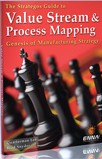|
Low volume products cost more per unit than high volume products in the same shop. Most
manufacturing people accept this notion intuitively. The magnitude of the disparity, however, is
often much greater than intuition indicates. Below are some examples of the contributing
factors.
One could argue that most of these examples are just sloppy practice and should have been
corrected. True enough, but, every shop has limited resources. In a mixed volume shop, resources
are naturally and sensibly directed at the high volume business.
|
Moreover, it often makes little sense to put forth a special effort for parts that only run
once or twice a year. For another perspective, see "The
Cost of Quality."
These are also examples of the Experience Curve effect. The more volume, the more likely
these problems will get resolved.
This is a strong argument for outsourcing to a shop whose forte is low volume or splitting
the plant into focused factories. In this way
systems, equipment and people can be optimized for the appropriate volume range.
|
| Department |
High Volume |
Low Volume |
| Production |
Prints are readily available.
|
Prints must be hunted down and
issued.
|
|
Tooling is known by operators and
immediately available.
|
Operators must look up tooling
numbers and track it down in the tool room.
|
|
Setups are familiar and fast.
|
Setups are unfamiliar, unpredictable and take more time
|
|
Operators are well down the learning curve, work quickly and with high
quality.
|
Operators have forgotten the last run and must relearn.
|
|
Standard containers are available.
|
Operators improvise containers.
|
|
Tooling is optimized for speed, quick setup and quality.
|
Tooling is ad hoc.
|
| Quality |
Gages are readily available.
|
Specific gages do not exist and measurement takes longer.
|
|
Inspectors know which defects are uncommon and do not require
inspection.
|
Inspectors check everything.
|
|
SPC provides a history of process control and prevents many defects.
|
History unavailable.
|
| Scheduling |
Kanban systems require little scheduling effort.
|
Work orders must be issued.
|
|
Little or no expediting.
|
Significant expediting required.
|
|
BOM is up to date and accurate.
|
BOM must be checked.
|
|
Components in stock.
|
Some components can't be found in the warehouse.
|
| Engineering |
Engineering has refined the design and kept it up to date.
|
Improvements have not been incorporated in the latest design.
|
|
Process has been reviewed and updated for latest equipment and tooling.
|
Process is ten years old and never been reviewed.
|
| Purchasing |
Components setup on blanket order with simple release mechanism.
|
Purchase order required with quotes and negotiation.
|





